41 other carbs on food labels
How to Calculate the Carbohydrates From the Food Label if Fiber ... - Chron However, many foods that you'll find in the grocery store contain a minimal amount of fiber. A typical granola bar might have 44 grams of carbohydrates with less than 3 grams of dietary fiber, for a net carb content of 41 grams. Instead, opt for low-carb, high fiber options such as hemp hearts. They have just 3 grams of carbs in a 1-ounce ... How To Figure Out The Carbs On Nutrition Labels If more than one type of sugar alcohol is listed, there must be a line for sugar alcohol grams on the nutrition label. Other Carbohydrates shows the number of digestible complex carbohydrates not considered a sugar (natural or added) and includes additives like stabilizers and starchy thickening agents. They don't make it easy, do they? Save
"Other" Carbohydrates On the Label - WebMD Basically the total carbohydrates includes everything and then some labels will break that out into subgroups like: Fiber grams (this is not digested and will eventually exit the body) Sugar grams...
Other carbs on food labels
Dietary Supplement Labeling Guide: Chapter IV. Nutrition Labeling When you make a claim about calories from saturated fat, insoluble fiber, polyunsaturated fat, sugar alcohol, monounsaturated fat, other carbohydrate, and soluble fiber, you must list that... What Are the Definitions of Total Carbohydrates & Other Carbohydrates ... When reading a nutrition label, the line "total carbohydrates" includes all types of carbohydrate found in the food or beverage. Total carbohydrates consist of multiple nutrients, including dietary fiber, sugars and starches. Each of these types of carbohydrate is critical to sufficient energy intake and overall health, although excessive ... LABEL READING: CARBOHYDRATES AND SUGARS - Renaissance Nutrition Center ... The label may list as many as six items: Total Carbohydrate. Dietary Fiber. Soluble fiber. Sugars. Sugar alcohols. Other Carbohydrates. Some manufacturers voluntarily include the subcategories of sugar alcohol and "other carbohydrates.". Others do not.
Other carbs on food labels. Understanding Food Nutrition Labels | American Heart Association When the Nutrition Facts label says a food contains "0 g" of trans fat, but includes "partially hydrogenated oil" in the ingredient list, it means the food contains some trans fat, but less than 0.5 grams per serving. So, if you eat more than one serving, you could end up eating too much trans fat. Food Labels | Nutrition.gov What's New with the Nutrition Facts Label. HHS, Food and Drug Administration. The U.S. Food and Drug Administration (FDA) has updated the Nutrition Facts label on packaged foods and beverages with a fresh design that will make it easier for you to make informed food choices that contribute to lifelong healthy eating habits. What's in a Name? 9 Sneaky Nutrition Claims Not to Fall for at the Grocery Store 5. 'Vegan'. People following a vegan diet avoid all animal products and by-products, including meat, dairy, eggs and honey. But just like with products labeled organic, people often confuse vegan snacks, baked goods, ice cream and other packaged foods to be healthier than their traditional counterparts, Shapiro says. › health › how-read-food-andHow To Read Food and Beverage Labels | National Institute on ... Feb 24, 2022 · Sometimes, food and beverage packaging includes terms that may try to convince the consumer the food is healthy. To help avoid confusion, the FDA sets specific rules for what food manufacturers can call “light,” “low,” “reduced,” “free,” and other terms. This type of labeling may have little to do with how nutritious the food is.
How to Understand and Use the Nutrition Facts Label | FDA It's important to realize that all the nutrient amounts shown on the label, including the number of calories, refer to the size of the serving. Pay attention to the serving size, especially how ... Reading food labels: Tips if you have diabetes - Mayo Clinic The serving sizes listed on food labels may be different from the serving sizes in your meal plan. If you eat twice the serving size listed on the label, you also double the calories, fat, carbohydrates, protein, sodium and other ingredients. Consider your daily calorie goals. The same goes for the Daily Value listed on food labels. Food Labels | CDC - Centers for Disease Control and Prevention If you eat the whole thing, you are eating 8 times the amount of calories, carbs, fat, etc., shown on the label. Total Carbohydrate shows you types of carbs in the food, including sugar and fiber. Choose foods with more fiber, vitamins, and minerals. Choose foods with lower calories, saturated fat, sodium, and added sugars. Avoid trans fat. › health-wellness › healthy-living8 Food Ingredients That Can Cause Inflammation - Arthritis ... Mono-sodium glutamate (MSG) is a flavor-enhancing food additive most commonly found in prepared Asian food and soy sauce, but it can also be added to fast foods, prepared soups and soup mixes, salad dressings and deli meats. This chemical can trigger two important pathways of chronic inflammation, and affect liver health.
Food Labels: Fat & Cholesterol | Home & Garden Information Center For all nutrients that you want to limit (e.g., total fat, saturated fat, trans fat, cholesterol and sodium), choose foods often that contain 5% DV or less of these nutrients. On the other hand, select foods with 20% DV or more of nutrients that you want to consume in larger amounts (e.g., fiber and calcium). catinfo.orgFeeding Your Cat: Know the Basics of Feline Nutrition ... This means that pet food labels are seriously lacking in usable information when compared to a package of food for a human. The “guaranteed analysis” numbers that you find on a can of food for protein, fat, and water (moisture) are listed as “minimums” and “maximums” which, by definition, are inaccurate. What Is the Difference Between Sugar & Carbs on Food Labels? Despite being listed as a distinct nutrient, "Total Carbs" on a food label refers to the sum of three groups of nutrients: sugars, starches and dietary fiber. As such, although all sugars are carbohydrates, not all carbohydrates are sugars. Sugar "Sugar" is one of two subheadings that the CFR requires beneath "Total Carbs" on a food label. Food Labels: Carbohydrates | Home & Garden Information Center On the other hand, choose foods often that contain 5% DV or less of nutrients that you want to limit (e.g., total fat, saturated, fat, trans fat, cholesterol and sodium). Example: On this label the total amount of carbohydrates in one serving (1 packet) is 24 g, or 8% DV. The dietary fiber is 1 g, or 3% DV. The total amount of sugars is 19 g.
Learning To Read Labels :: Diabetes Education Online The grams of total carbohydrate per serving is 30 grams. If you eat 6 pieces, that is two servings. You would be getting 60 grams of total carbohydrate (1 serving = 30 grams of total carbohydrate, 2 servings = 60 grams of total carbohydrate). Or, if you only eat one piece, then you would only get 10 grams of carbohydrate.
What are "Other Carbs" on a food label?? - Bodybuilding.com I was eating a bowl of "Honey Bunches of Oats" Cereal and looked at the label. It listed Carbs as 25 grams. Sugars are 6 grams, Fiber is 2 grams, Other carbs are 17 grams. What are these "other carbs"? Sugars have big impact on blood sugars while Fiber has little impact. Are these "Other Carbs" like a sugar or a fiber or somewhere in between?
› article › xtqiqheaacaacj45How Many Carbs Can You Have on Keto? | Carb Manager This means around seven olives come out to 1g of carbs! #7. Cauliflower. If you're looking for a Keto-friendly food to take the place of starches like rice and potatoes in your diet, look no further than the friendly cauliflower. Cauliflower contains only 2g of net carbs per cup, so you can fill up on it and hardly move the carb needle.
Low Carb Guide to Understanding Nutrition Labels - Virta Health Sugar should be zero as often as possible (1-2g at most). Fiber is a carb and should be included in your total for the day (initially 30g or less). Again, pay attention to the serving size. Something might be low in carbs, but if you eat 3 or 4 servings, you can easily go over your daily limit. 7.
Food labels - NHS These labels provide information on the number of grams of fat, saturated fat, sugars and salt, and the amount of energy (in kJ and kcal) in a serving or portion of the food. But be aware that the manufacturer's idea of a portion may be different from yours. Some front-of-pack nutrition labels also provide information about reference intakes.
What Do Total Carbohydrate And Added Sugar On The Nutrition Label Mean ... If more than one type of sugar alcohol is listed, there must be a line for sugar alcohol grams on the nutrition label. Other Carbohydrates shows the number of digestible complex carbohydrates not considered a sugar (natural or added) and includes additives like stabilizers and starchy thickening agents. Now, isn't that crystal clear? Save
LABEL READING: CARBOHYDRATES AND SUGARS - Renaissance Nutrition Center ... The label may list as many as six items: Total Carbohydrate. Dietary Fiber. Soluble fiber. Sugars. Sugar alcohols. Other Carbohydrates. Some manufacturers voluntarily include the subcategories of sugar alcohol and "other carbohydrates.". Others do not.
What Are the Definitions of Total Carbohydrates & Other Carbohydrates ... When reading a nutrition label, the line "total carbohydrates" includes all types of carbohydrate found in the food or beverage. Total carbohydrates consist of multiple nutrients, including dietary fiber, sugars and starches. Each of these types of carbohydrate is critical to sufficient energy intake and overall health, although excessive ...
Dietary Supplement Labeling Guide: Chapter IV. Nutrition Labeling When you make a claim about calories from saturated fat, insoluble fiber, polyunsaturated fat, sugar alcohol, monounsaturated fat, other carbohydrate, and soluble fiber, you must list that...
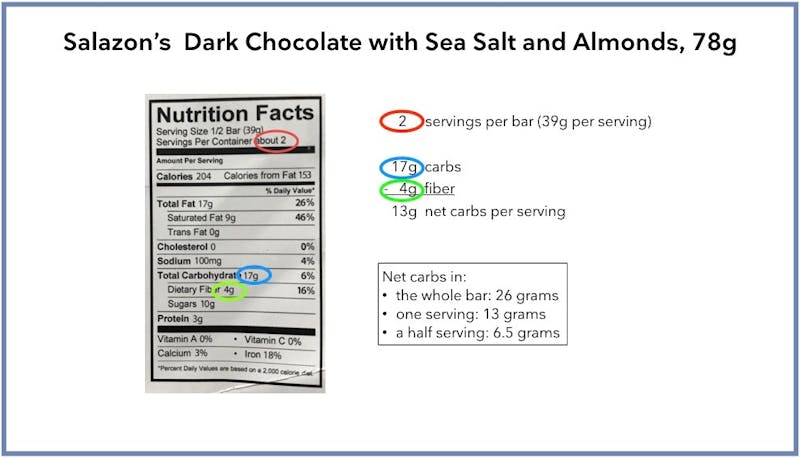

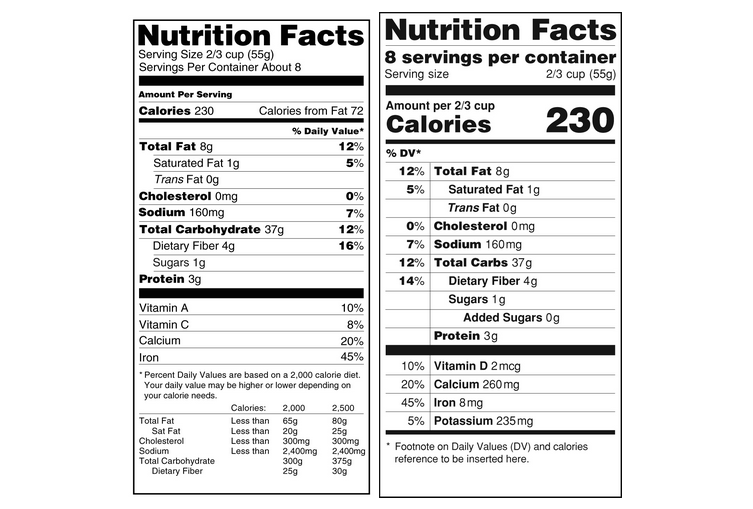


/carb-counting-and-diabetes-5209223_FINAL-9796df35fa38420baec37a37c3c8347e.jpg)

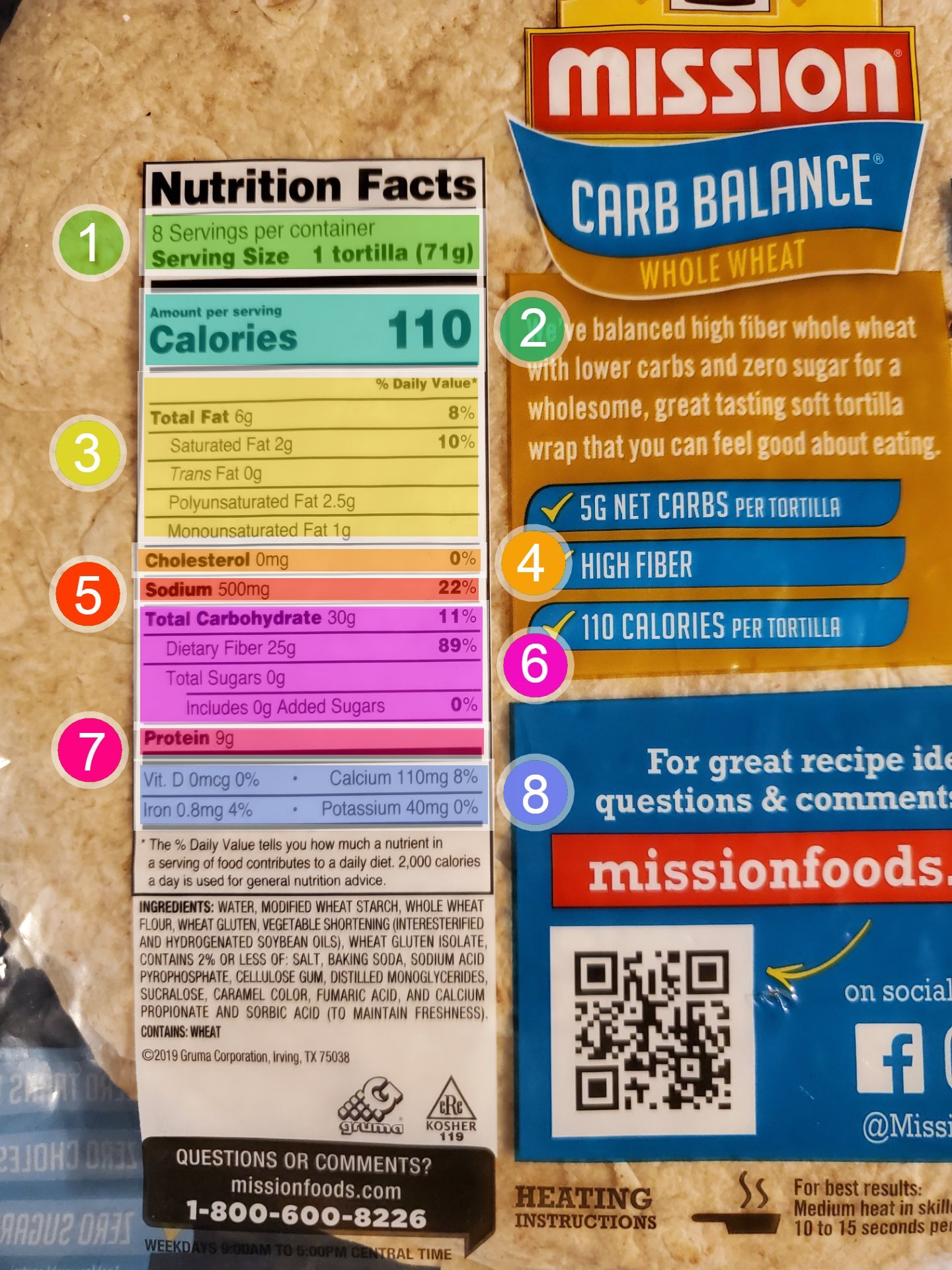





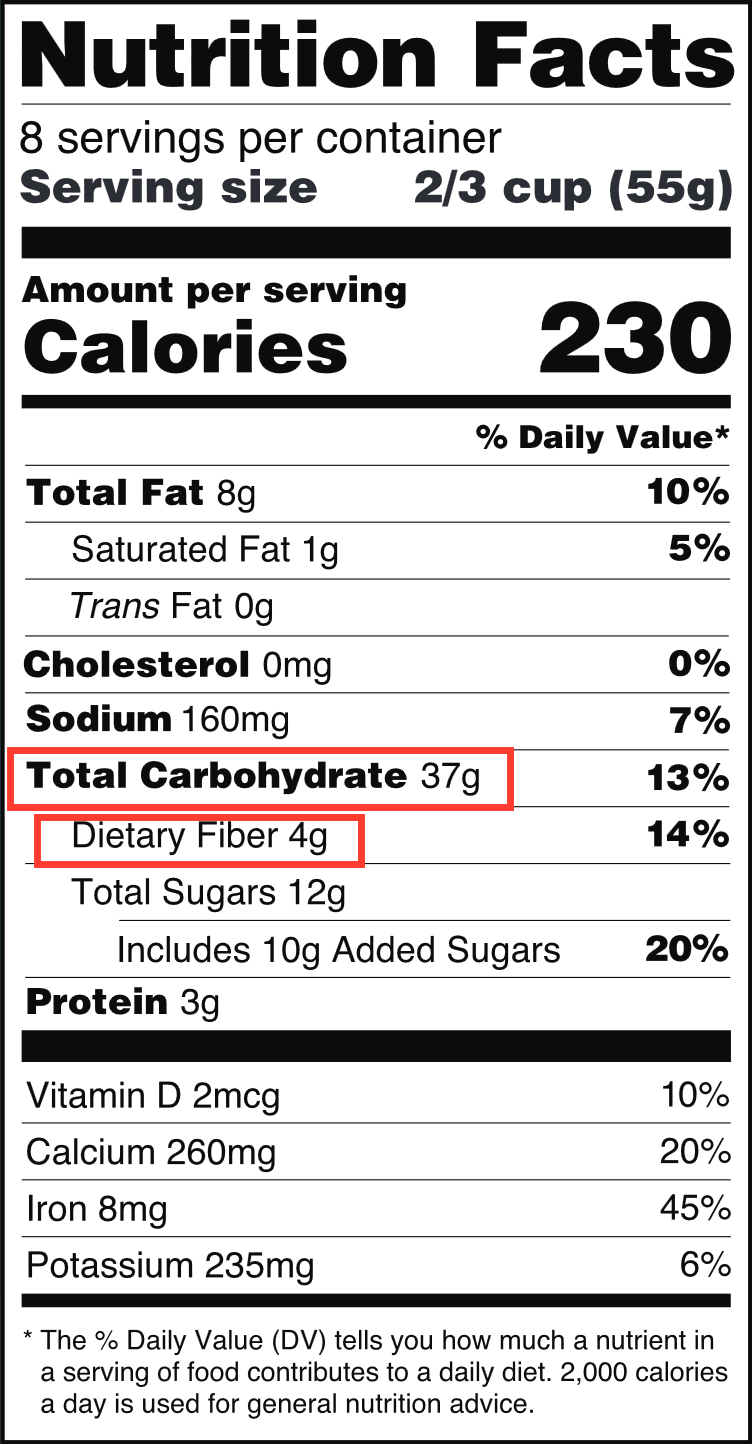

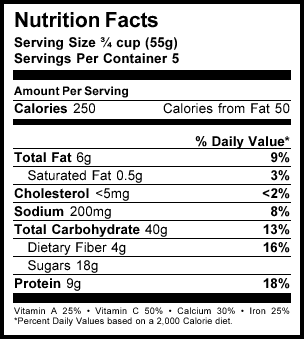
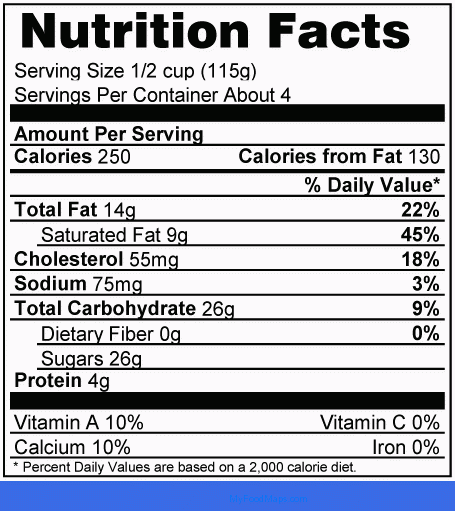

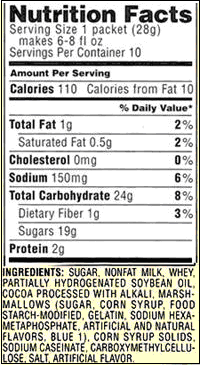





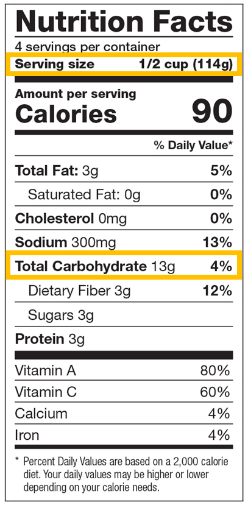



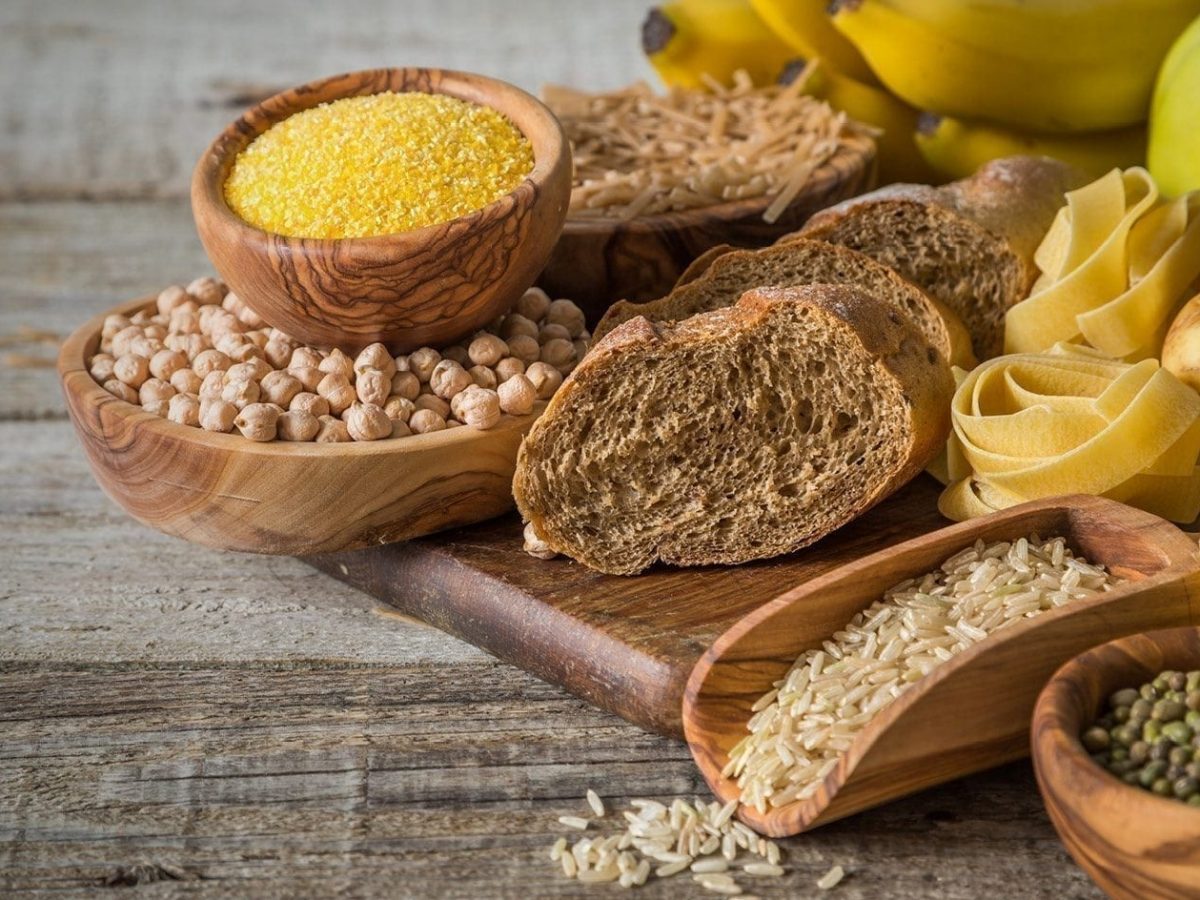

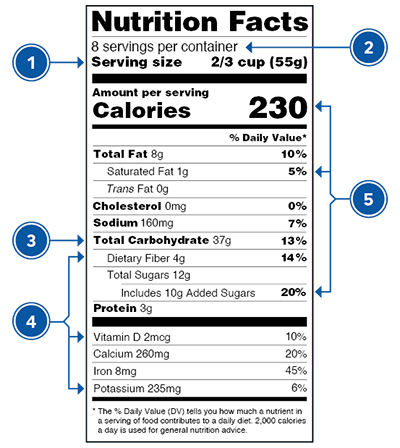
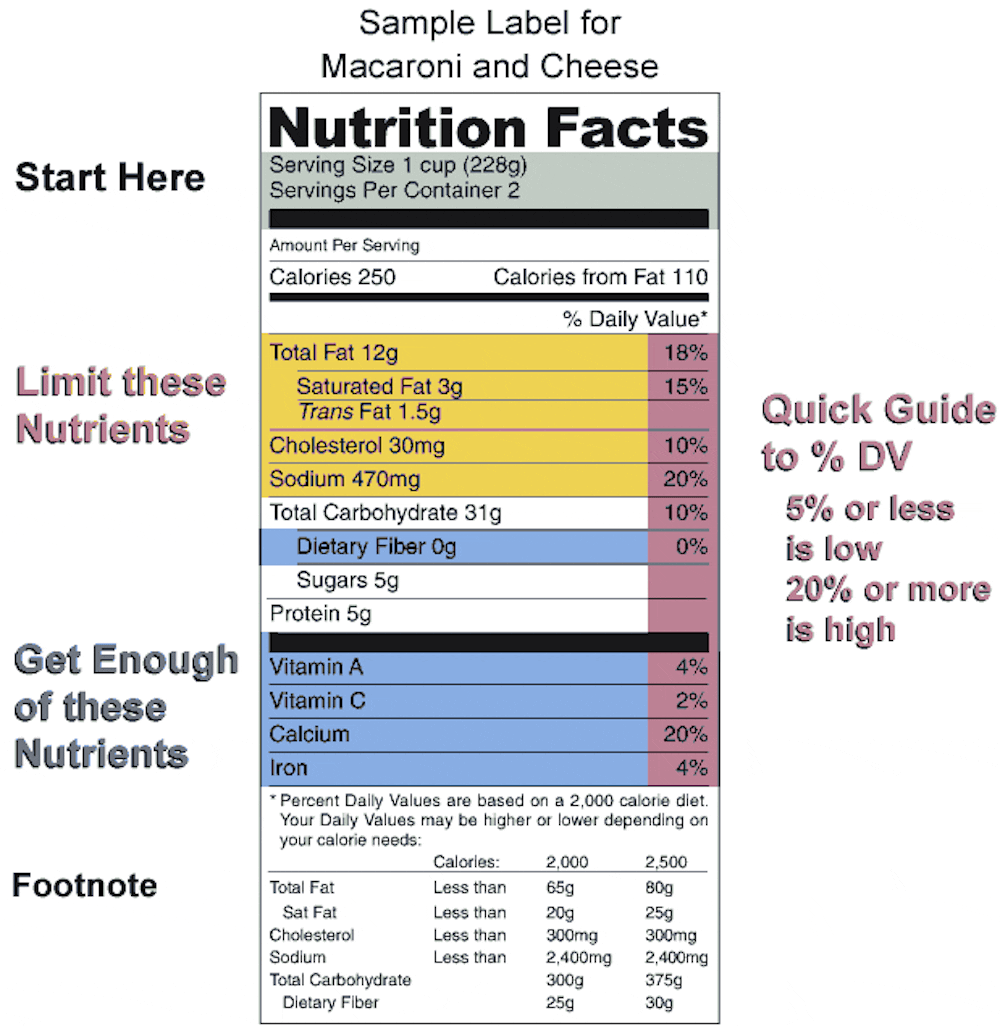


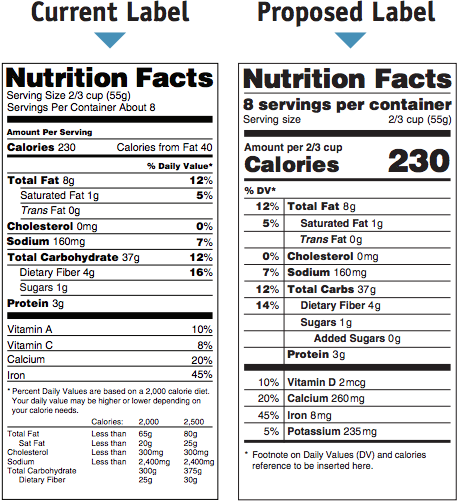

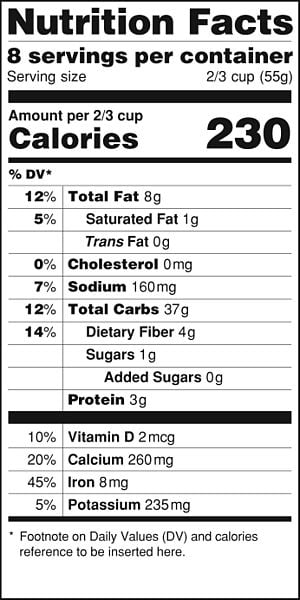
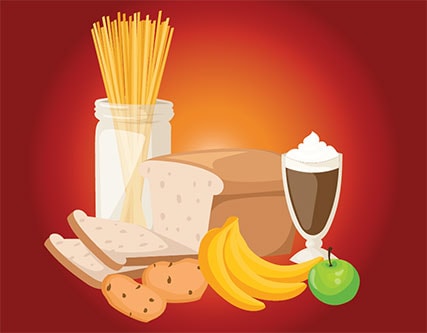
Post a Comment for "41 other carbs on food labels"